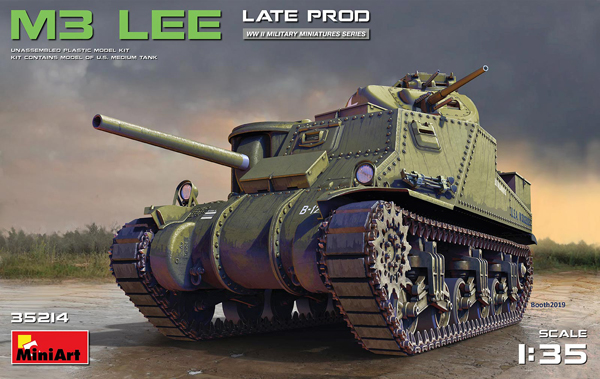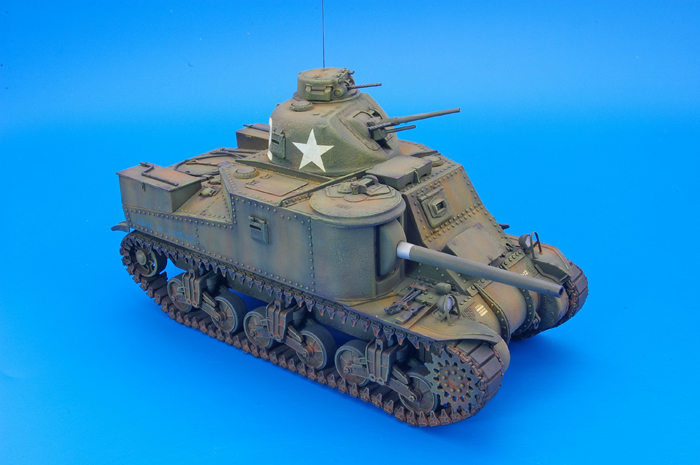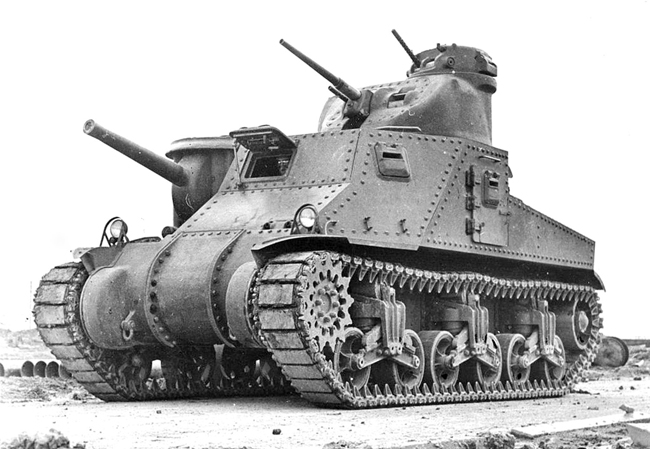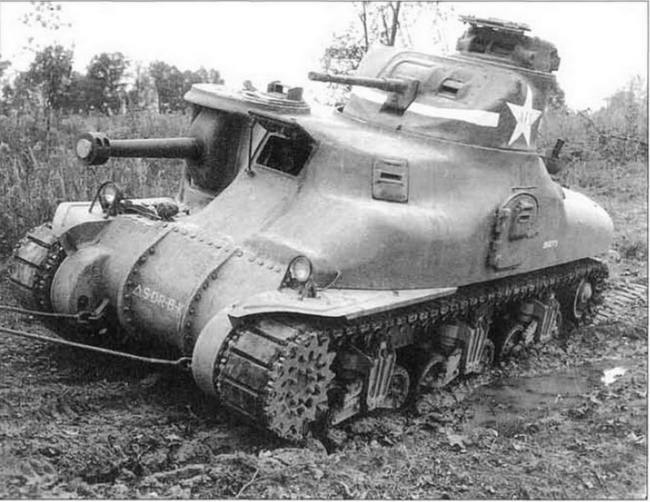
Full Review with Dai Williams
A note from Geoff C…
Here’s a look at Dai’s finished project…

Lovely work again Dai and over to you for your story on this one…
History
Following the First World War there was little development or innovation involving the use of tanks in the American Army. The economic decline of the great depression and an unwillingness to become involved in another European war meant that there was little investment in the armed forces in general and in tank production in particular. Existing tanks were to be taken over by the infantry to be used in a support role and there was little effort put into the development of more up to date armoured vehicles or tactics appropriate to the modern battlefield. Recommendations around the formation of an independent tank corps among some of the more enlightened and far sighted members of the army were ignored.
In September 1939, the German Army invaded Poland and unable to deal with the coordinated use of modern armour, aircraft and infantry the Polish army surrendered after only 18 days of fighting. This was a rude awakening for the American Army and it finally became apparent that the U.S.A. was lagging behind other countries in both tactics and equipment.
The M2 tanks on order for the army in 1940 were already obsolete when compared to their German counterparts and it was obvious that an up to date and more heavily armed vehicle was urgently required.
It was thought that should it become necessary to counter the new German tanks, a vehicle carrying a 75mm gunning a fully rotating turret would be required (this vehicle eventually appeared as the famous M4 Sherman). However, at the beginning of the Second World War American industry was not capable of mass producing such a vehicle. It was therefore decided that a radical redesign of the existing M2A1 tank would be undertaken to provide the army with a stop-gap vehicle. The resulting vehicle, known as the M3, carried a 75mm gun in a sponson on the right hand side which allowed very limited traverse, a 37mm gun in a fully rotating turret and a machine gun in a second turret on top of this.

The M3 was very much a stop-gap design until work on the M4 could begin and as such it was not without its problems.
The vehicle was powered by a radial engine with its crank shaft raised high off the floor of the fighting compartment and this meant it had a high silhouette making it an easy target for anti-tank gunners.
The tank was of riveted construction (though a small number of vehicles were also produced with cast hulls).

The riveted construction led to fears that taking a hit from an anti-tank round would cause the rivets to detach, rattling around inside the vehicle like bullets, with fatal consequences for the unfortunate crew (though the combustion of ammunition widely dispersed around the interior of the tank was actually a far greater problem).
Despite these issues the M3 had some very advanced features for its time. Both the 75mm and 37mm guns were gyro-stabilised and so could in theory be fired when the tank was moving. The tank was also far less cramped than its contemporaries and unlike the guns carried by British tanks at that time, its 75mm gun was capable of firing both high explosive and armour piercing rounds.
The British Army had lost a great deal of its equipment including many of its armoured vehicles following its evacuation from Dunkirk. To make up the shortfall acquired large numbers of American M3 tanks under the ‘lend lease’ scheme. The M3 was also supplied to Russia until the large-scale production of their own T34 tanks got underway.
The British Army used two main versions of the M3 named after two Generals who fought in the American Civil War. The M3 as originally designed (known as the General Lee) was used pretty much as supplied except that the upper machine gun turret was usually removed. A redesigned version known as the General Grant was also supplied in large numbers. The General Grant had a larger redesigned turret to accommodate the British Army’s requirement to carry the vehicle’s radio in the turret rather than in the main fighting compartment.
Though a stop gap design the M3 made a major impact during the battles in the Western Desert. The tank was reliable and its 75mm gun was able to destroy the opposing German tanks it encountered. The M3 was vulnerable to the German 88mm anti-tank gun (a situation faced by most allied vehicles right up until the end of the war), but the fact that it could fire high explosive rounds rather than just armour piercing rounds meant that it was more than capable of destroying these anti-tank guns which restricted the use of these formidable weapons.
Though it looked antiquated when compared to contemporary allied vehicles, the chassis of the M3 was easy to maintain and was reliable. Damaged suspension units could be removed and replaced very easily making the M3 easier to repair than some other tanks. This ease of maintenance and repair allowed the M3 to be used as a basis for other types of vehicle such as the Priest and Sexton mobile artillery pieces, ammunition carriers, armoured recovery vehicles and experimental vehicles such as the highly classified ‘canal defence light’ (which had nothing whatsoever to do with defending canals or anything else for that matter!).
The M3 was in production for only around 12 months before it was replaced in American, British and Canadian service by the M4 Sherman, whilst in Russia it was replaced by the T34. However, the arrival of its successors did not mean the end of the M3 as a front-line tank. The M3 continued to see action in the Far East where it was more than capable of dealing with the notoriously inferior Japanese armoured vehicles right up until the end of the war.